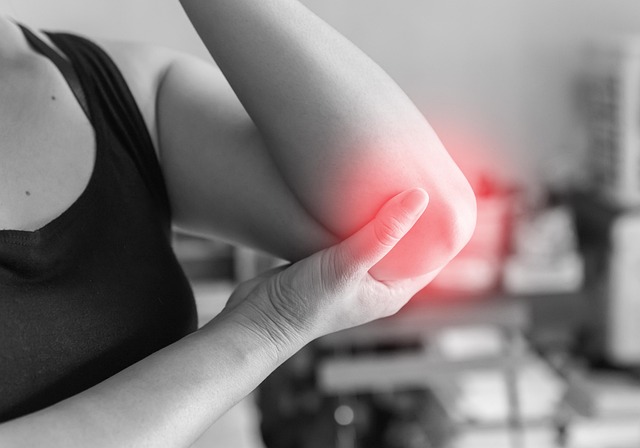Regenerative pain management, an innovative approach, replaces traditional medication with techniques like PRP therapy, stem cell treatments, and targeted exercises to activate the body's natural healing. This method addresses chronic pain holistically, reducing side effects and long-term dependency on pharmaceuticals. By harnessing the body's resources, it offers faster recovery times, improved well-being, and sustainable results, gaining traction as a promising alternative for medication-resistant pain conditions.
In today’s world, many rely on medications for pain relief. However, mounting concerns over medication dependence and side effects have sparked interest in alternative approaches, notably regenerative pain management. This comprehensive guide explores regenerative recovery methods, from cell therapy to physical healing techniques, offering a promising alternative to conventional treatment. Discover how reducing reliance on medications can enhance natural healing processes, with real-world success stories showcasing a shift towards holistic care.
- Understanding Regenerative Pain Management: An Alternative Approach
- The Current Landscape: Medication Dependence and Its Impact
- Exploring Regenerative Methods: From Cell Therapy to Physical Healing
- Benefits of Reducing Medication Reliance: Enhancing Natural Recovery
- Implementation and Real-World Success Stories: A Shift Towards Holistic Care
Understanding Regenerative Pain Management: An Alternative Approach

Regenerative pain management is an emerging field that shifts the focus from simply masking symptoms to stimulating the body’s inherent healing mechanisms. Unlike traditional medication-led approaches, this alternative method aims to promote natural recovery and reduce reliance on pharmaceuticals. By harnessing the body’s regenerative capabilities, it offers a promising path for managing chronic pain conditions.
This approach incorporates various techniques such as platelet-rich plasma (PRP) therapy, stem cell treatments, and tissue engineering. These cutting-edge methods encourage the growth of new, healthy tissues while reducing inflammation. The key lies in tapping into the body’s natural resources, promoting blood flow, and fostering an environment conducive to healing. As a result, regenerative pain management provides a holistic solution, offering patients a chance to experience significant pain relief without the side effects often associated with long-term medication use.
The Current Landscape: Medication Dependence and Its Impact

In today’s world, medication dependence is a growing concern, especially within the realm of pain management. The current landscape involves a heavy reliance on pharmaceuticals to alleviate pain and manage various health conditions. While these medications offer temporary relief, they often come with a plethora of side effects and the potential for long-term dependency. This has led many folks to seek alternative, regenerative recovery methods as a game changer in pain management.
The impact of this medication dependence is far-reaching. It not only affects individual health but also contributes to a complex web of challenges within healthcare systems. From fostering a hustle and bustle of prescription refills to the potential for adverse interactions, the side effects can be quite intricate. Additionally, the financial burden on patients and healthcare providers alike is significant, making it crucial to explore regenerative pain management as a viable solution.
Exploring Regenerative Methods: From Cell Therapy to Physical Healing

Exploring Regenerative Methods offers a promising alternative to traditional medication-focused pain management. Cell therapy, a cutting-edge technique, involves introducing specialized cells to damaged tissues, stimulating the body’s natural healing processes and potentially reducing the need for long-term pharmaceuticals. This approach has shown encouraging results in treating various conditions, from muscle injuries to chronic joint pain.
Physical healing plays a pivotal role in regenerative recovery methods. Techniques like targeted exercise programs, massage therapy, and manual manipulation can promote blood flow, reduce inflammation, and enhance tissue repair. By combining these approaches with cell therapy, individuals may experience faster recovery times and reduced reliance on medications, ultimately embracing a holistic path to pain relief and improved overall well-being.
Benefits of Reducing Medication Reliance: Enhancing Natural Recovery

Reducing reliance on medications is a significant aspect of regenerative recovery methods, offering numerous benefits for those seeking alternative approaches to managing pain and promoting healing. One of the key advantages is the enhancement of natural recovery processes within the body. By lessening the dependence on pharmaceutical interventions, individuals can tap into their inherent ability to heal themselves. This shift focuses on nurturing the body’s natural mechanisms, allowing it to regenerate tissues, repair damage, and restore balance without relying heavily on external substances.
Regenerative pain management encourages a holistic approach that supports the body’s innate wisdom. When medications are reduced, the body can engage in its own restorative functions, leading to more sustainable results. This method respects the complex interplay between physical, mental, and emotional well-being, recognizing that each aspect is interconnected. As a result, individuals may experience improved overall health, increased resilience, and a diminished need for long-term medication use.
Implementation and Real-World Success Stories: A Shift Towards Holistic Care

The shift towards regenerative recovery methods and holistic care is gaining momentum, with many success stories emerging in both clinical settings and real-world applications. These innovative approaches to pain management go beyond traditional medication by focusing on the body’s inherent healing abilities and promoting natural recovery processes. For instance, regenerative medicine techniques such as platelet-rich plasma (PRP) therapy have shown promising results in treating chronic musculoskeletal conditions, offering an alternative to long-term pharmacological interventions.
Many healthcare providers are now integrating these methods into their practices, witnessing improved patient outcomes and increased satisfaction. Real-world examples include athletes who have successfully recovered from injuries using stem cell therapies, individuals with chronic pain managing their symptoms through physical therapy and mindfulness practices, and patients with joint issues experiencing relief without the need for frequent medication refills. These success stories highlight the potential of regenerative recovery methods to reduce reliance on medications while enhancing overall well-being.
In conclusion, regenerative pain management offers a promising alternative to medication-driven approaches, enabling individuals to reduce reliance on drugs and enhance their natural recovery capabilities. By exploring innovative methods such as cell therapy and physical healing techniques, we can navigate towards a more holistic care system. The benefits of these regenerative strategies are clear, promoting not only improved physical well-being but also a greater sense of empowerment and control over one’s pain management. As implementation continues to grow and success stories emerge, it’s evident that embracing regenerative recovery methods is a step towards a brighter, less medicated future.
